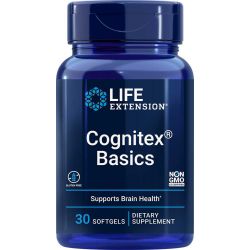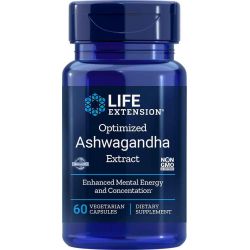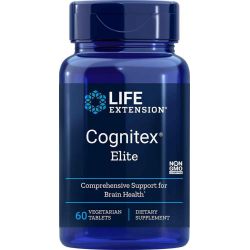Preserving and Restoring Brain Function part 2
Ashwagandha and the Brain
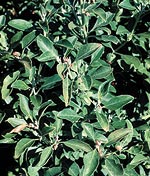 Ashwagandha is a medicinal plant used in India to treat a wide range of age-related disorders.53-63 Its most remarkable effect may involve its ability to preserve the health of the aging brain.
Ashwagandha is a medicinal plant used in India to treat a wide range of age-related disorders.53-63 Its most remarkable effect may involve its ability to preserve the health of the aging brain.
Ashwagandha offers myriad neuroprotective benefits. For example, one study showed that when given to mice, ashwagandha extract promotes memory retention, even when amnesia has been induced experimentally.60 Another study found that ashwagandha extract is capable of protecting the brains of laboratory rats against experimentally induced stroke.61 Ashwagandha constituents have also been shown to inhibit acetylcholinesterase (AChE), an enzyme responsible for breaking down acetylcholine, the neurotransmitter that is in dangerously short supply in the brains of Alzheimer’s disease sufferers.62 This AChE-blocking action is similar to that of prescription drugs such as Aricept® that are currently used to treat Alzheimer’s symptoms.
Exciting new research indicates that ashwagandha extract is capable of halting and even repairing damage to brain cells in an experimentally induced model of Alzheimer’s disease.63 Scientists in Japan induced Alzheimer’s-type brain cell atrophy and loss of synaptic function in mice by exposing them to the toxic protein Abeta, which has been implicated in the genesis of Alzheimer’s disease in humans. “Subsequent treatment with [a constituent of ashwagandha] induced significant regeneration of both axons and dendrites, in addition to the reconstruction of pre- and postsynapses in the neurons,” according to the scientists.63
Grape Seed Counters Brain Cell Aging
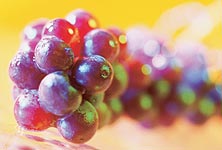 Wine has always been popular, but its health benefits are now the subject of intense scientific scrutiny. Wine is an excellent source of beneficial polyphenol compounds. For those unwilling or unable to imbibe regularly, the remarkable benefits of grape polyphenols are available through grape seed extracts. Scientific studies have shown that the antioxidant power of these natural compounds—known as proanthocyanidins—is 20 times greater than vitamin E and 50 times greater than vitamin C.71
Wine has always been popular, but its health benefits are now the subject of intense scientific scrutiny. Wine is an excellent source of beneficial polyphenol compounds. For those unwilling or unable to imbibe regularly, the remarkable benefits of grape polyphenols are available through grape seed extracts. Scientific studies have shown that the antioxidant power of these natural compounds—known as proanthocyanidins—is 20 times greater than vitamin E and 50 times greater than vitamin C.71
Recent research indicates that grape seed extract may play a specific role in protecting the brain by preventing the kind of neuronal toxicity experienced by Alzheimer’s disease patients. Korean scientists pre-treated rat brain cells with a grape seed extract in the laboratory before exposing the cells to beta-amyloid (Abeta), a toxic protein implicated in the formation of senile plaques in the brains of Alzheimer’s patients. Untreated cells exposed to Abeta accumulated damaging reactive oxygen species (free radicals) and underwent programmed cell death. However, rat brain cells pre-treated with the grape seed extract were significantly protected from the toxic effects of Abeta.72
New research from China suggests that grape seed polyphenols offer protection by preventing oxidative damage to cellular DNA.73 In the US, scientists analyzed the brain proteins of rats that were fed grape seed extract for six weeks, and identified 13 proteins that were positively altered by the supplement. The scientists stated that grape seed extract may confer “neuroprotective actions.”74
Vinpocetine Enhances Brain Circulation
 Vinpocetine is a semi-synthetic derivative of the periwinkle (Vinca minor) plant. Developed more than three decades ago, vinpocetine has been hailed as an important neuroprotective agent with several key mechanisms of action.75 It has been widely used to treat symptoms of cognitive decline throughout Europe, where it is available only by prescription. Vinpocetine’s ability to increase blood circulation and enhance glucose utilization in the brain is one of its most powerful effects.76-79 This is particularly helpful to the aging brain, given that blood flow in the brain (and thus, oxygenation) tends to diminish with advancing age.
Vinpocetine is a semi-synthetic derivative of the periwinkle (Vinca minor) plant. Developed more than three decades ago, vinpocetine has been hailed as an important neuroprotective agent with several key mechanisms of action.75 It has been widely used to treat symptoms of cognitive decline throughout Europe, where it is available only by prescription. Vinpocetine’s ability to increase blood circulation and enhance glucose utilization in the brain is one of its most powerful effects.76-79 This is particularly helpful to the aging brain, given that blood flow in the brain (and thus, oxygenation) tends to diminish with advancing age.
Vinpocetine’s therapeutic effects include its ability to enhance the electrical conductivity of cells composing the neural network. It protects the brain from damage caused by the excessive release of calcium ions intracellularly. Vinpocetine improves cerebral blood flow by inhibiting an enzyme that degrades cyclic GMP, a cellular metabolite. Degradation of cyclic GMP causes blood vessel constriction. Preventing degradation, therefore, allows cerebral arteries to relax, improving blood flow.76-78,80-82
Scientists have studied vinpocetine’s effects on human subjects under controlled conditions in various clinical trials. Three studies of older adults with memory problems associated with poor brain circulation or dementia-related disease have shown that vinpocetine confers significantly more improvement than a placebo in performance on comprehensive cognitive tests reflecting attention, concentration, and memory.83 Vinpocetine has even been studied in newborn babies who suffered brain damage due to birth trauma. Vinpocetine significantly reduced or eradicated seizures and elicited a decrease in abnormally high pressure within the brain.84
These studies reveal that vinpocetine’s therapeutic effects compare favorably with acetylcholinesterase inhibitor drugs such as Aricept®, which is used extensively in the US and abroad to treat Alzheimer’s symptoms and vascular dementia. Human trials and others using rodent models reveal that vinpocetine is safe, effective, and well tolerated.81,85-87
There have been some reports that vinpocetine in combination with the prescription drug Coumadin® (warfarin) may slightly influence prothrombin time, a measure of the clotting time of blood plasma.88,89 Although vinpocetine is unlikely to have a clinically meaningful effect on prothrombin time in patients who are also taking Coumadin®, please consult with your doctor if you plan to use a vinpocetine-containing supplement concomitantly with Coumadin® (warfarin).
Pregnenolone Promotes Nerve Growth
 Pregnenolone is a powerful natural hormone that is synthesized directly from cholesterol in the mitochondria, the “power plants” contained in all human cells. Pregnenolone for supplemental use is derived from a compound that occurs naturally in wild yams. In the body, pregnenolone is converted into other important hormones, including dehydroepiandrosterone (DHEA), estrogens, progesterone, and testosterone.90
Pregnenolone is a powerful natural hormone that is synthesized directly from cholesterol in the mitochondria, the “power plants” contained in all human cells. Pregnenolone for supplemental use is derived from a compound that occurs naturally in wild yams. In the body, pregnenolone is converted into other important hormones, including dehydroepiandrosterone (DHEA), estrogens, progesterone, and testosterone.90
Aging causes a sharp decline in pregnenolone production, and levels of the hormones for which it is a precursor tend to decline with age as well.91-93 Progesterone, for example, is synthesized in the brain, spinal cord, and peripheral nerves from its direct precursor, pregnenolone.94 Recent research suggests that progesterone plays a role in promoting the viability of nerve cells and in the formation of myelin sheaths, the fatty layers of “insulation” that allow electrochemical signals to propagate rapidly from one nerve to another. A recent clinical report summed up the potential implications of increasing progesterone: “Synthesis of progesterone in the brain, and the neuroprotective and promyelinating effects of this neurosteroid, offer interesting therapeutic possibilities for the prevention and treatment of neurodegenerative diseases, for accelerating regenerative processes, and for preserving cognitive functions during aging.”94
Researchers in France have documented a significant correlation between cognitive performance and levels of pregnenolone sulfate, a neurosteroid. The scientists recently established that pregnenolone directly influences acetylcholine release in several key brain areas involved in memory and learning, cognition, and the sleep-wakefulness cycle. The research team has also shown that pregnenolone reverses declining neurogenesis, or new nerve growth. Such declines are associated with disorders such as Alzheimer’s disease. “Our data demonstrate that [pregnenolone sulfate] central infusions dramatically increase neurogenesis . . . furthermore, our recent data suggest a critical role for neurosteroids in the modulation of cerebral plasticity, mainly on hippocampal neurogenesis.”95,96
Pregnenolone is not recommended for men with prostate cancer, as androgenizing hormones such as DHEA and testosterone may exacerbate this condition. Conversely, pregnenolone may confer some protection against other types of cancer by helping the body regulate estrogen levels. Pregnenolone has also been credited with alleviating symptoms of menopause, reducing the incidence of osteoporosis, and decreasing levels of LDL (low-density lipoprotein).
Ginger and Rosemary: Natural Anti-inflammatories
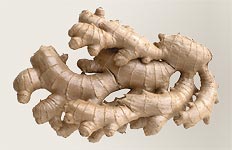 The next time you need relief from pain or inflammation, consider heading for the spice rack rather than the medicine cabinet. Some of nature’s most potent anti-inflammatories are found in ginger and rosemary. Ginger has been used for thousands of years as a remedy for the pain and inflammation of arthritis,97 and research has confirmed its effects.97-103 A recent study conducted at Johns Hopkins University examined ginger’s ability to suppress inflammatory compounds in cells obtained from the joints of arthritis patients, which had been cultured in the laboratory. “We discovered that the ginger extract blocks activation of pro-inflammatory mediators and its transcriptional regulator . . . [ginger extract] offers a complementary and alternative approach to modulate the inflammatory process involved in arthritis,” the researchers concluded.101
The next time you need relief from pain or inflammation, consider heading for the spice rack rather than the medicine cabinet. Some of nature’s most potent anti-inflammatories are found in ginger and rosemary. Ginger has been used for thousands of years as a remedy for the pain and inflammation of arthritis,97 and research has confirmed its effects.97-103 A recent study conducted at Johns Hopkins University examined ginger’s ability to suppress inflammatory compounds in cells obtained from the joints of arthritis patients, which had been cultured in the laboratory. “We discovered that the ginger extract blocks activation of pro-inflammatory mediators and its transcriptional regulator . . . [ginger extract] offers a complementary and alternative approach to modulate the inflammatory process involved in arthritis,” the researchers concluded.101
Because inflammation is implicated in the development of certain degenerative neurological disorders such as Alzheimer’s disease, controlling it is crucial to preserving brain health. While ginger has demonstrated anti-inflammatory properties, especially in arthritis, it has also been shown to block activation of brain cells that are involved in the inflammatory cascade implicated in the development of Alzheimer’s.
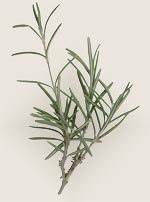 When brain cells are exposed to beta-amyloid peptides (Abeta), microglial cells surround the Abeta-containing neuritic plaques and produce proinflammatory cytokines, chemokines, and neurotoxic mediators. It is believed that when this inflammatory process continues unabated, nerve cells are destroyed, contributing to the development of Alzheimer’s.103,104 Scientists wondered whether ginger extract could suppress activation of these brain cells by proinflammatory substances. By incubating cells with ginger extract and various inflammation-provoking substances, they demonstrated that “ginger can inhibit activation of human monocytic THP-1 cells by different pro-inflammatory stimuli and reduce the expression of a wide range of inflammation-related genes in these microglial-like cells.” The scientists concluded that ginger extract “may be useful in delaying the onset and the progression of neurodegenerative disorders.103
When brain cells are exposed to beta-amyloid peptides (Abeta), microglial cells surround the Abeta-containing neuritic plaques and produce proinflammatory cytokines, chemokines, and neurotoxic mediators. It is believed that when this inflammatory process continues unabated, nerve cells are destroyed, contributing to the development of Alzheimer’s.103,104 Scientists wondered whether ginger extract could suppress activation of these brain cells by proinflammatory substances. By incubating cells with ginger extract and various inflammation-provoking substances, they demonstrated that “ginger can inhibit activation of human monocytic THP-1 cells by different pro-inflammatory stimuli and reduce the expression of a wide range of inflammation-related genes in these microglial-like cells.” The scientists concluded that ginger extract “may be useful in delaying the onset and the progression of neurodegenerative disorders.103
Like ginger, rosemary has long enjoyed a reputation as a venerable healing herb. One of its chief active constituents, carnosol, functions as an antioxidant and anticarcinogen. Researchers in Taiwan reported recently that their findings suggest that carnosol inhibits nuclear factor-kappa beta activation, and provide possible mechanisms for its anti-inflammatory action.”105 Another rosemary constituent, ursolic acid, has also been shown to interrupt the pathway that leads to activation of pro-inflammatory nuclear factor- kappa beta.106
New Beginnings
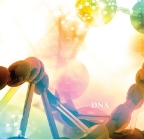 While various factors threaten us with “brain drain” as we age, the good news is that modern science has identified nutrients that can slow or even reverse the progression of this once-inevitable decline. These supplements offer a smart option for maintaining brain health throughout life.
While various factors threaten us with “brain drain” as we age, the good news is that modern science has identified nutrients that can slow or even reverse the progression of this once-inevitable decline. These supplements offer a smart option for maintaining brain health throughout life.
Material used with permission of Life Extension. All rights reserved.
1. Parnetti L, Amenta F, Gallai V. Choline alphoscerate in cognitive decline and in acute cerebrovascular disease: an analysis of published clinical data. Mech Ageing Dev. 2001 Nov;122(16):2041-55.
2. Meyer JS, Quach M, Thornby J, Chowdhury M, Huang J. MRI identifies MCI subtypes: vascular versus neurodegenerative. J Neurol Sci. 2005 Mar 15;229-230:121-9.
3. Schmitt-Schillig S, Schaffer S, Weber CC, Eckert GP, Muller WE. Flavonoids and the aging brain. J Physiol Pharmacol. 2005 Mar;56 Suppl:123-36.
4. Anstey KJ, Low LF. Normal cognitive changes in aging. Aust Fam Physician. 2004 Oct;33(10):783-7.
5. Bodles AM, Barger SW. Cytokines and the aging brain – what we don’t know might help us. Trends Neurosci. 2004 Oct;27(10):621-6.
6. Richard CC, Veltmeyer MD, Hamilton RJ, et al. Spontaneous alpha peak frequency predicts working memory performance across the age span. Int J Psychophysiol. 2004 Jun;53(1):1-9.
7. Butler RN, Forette F, Greengross BS. Maintaining cognitive health in an ageing society. J R Soc Health. 2004 May;124(3):119-21.
8. Amenta F, Parnetti L, Gallai V, Wallin A. Treatment of cognitive dysfunction associated with Alzheimer’s disease with cholinergic precursors. Ineffective treatments or inappropriate approaches? Mech Ageing Dev. 2001 Nov;122(16):2025-40.
9. Berger MM. Can oxidative damage be treated nutritionally? Clin Nutr. 2005 Apr;24(2):172-83.
10. Somayajulu M, McCarthy S, Hung M, et al. Role of mitochondria in neuronal cell death induced by oxidative stress; neuroprotection by coenzyme Q10. Neurobiol Dis. 2005 Apr;18(3):618-27.
11. Ames BN. Mitochondrial decay, a major cause of aging, can be delayed. J Alzheimers Dis. 2004 Apr;6(2):117-21.
12. Poon HF, Calabrese V, Scapagnini G, Butterfield DA. Free radicals and brain aging. Clin Geriatr Med. 2004 May;20(2):329-59.
13. Berr C, Wancata J, Ritchie K. Prevalence of dementia in the elderly in Europe. Eur Neuropsychopharmacol. 2005 Aug;15(4):463-71.
14. Rait G, Fletcher A, Smeeth L, et al. Prevalence of cognitive impairment: results from the MRC trial of assessment and management of older people in the community. Age Ageing. 2005 May;34(3):242-8.
15. Bonin-Guillaume S, Zekry D, Giacobini E, Gold G, Michel JP. The economical impact of dementia. Presse Med. 2005 Jan 15;34(1):35-41.
16. Luis CA, Loewenstein DA, Acevedo A, Barker WW, Duara R. Mild cognitive impairment: directions for future research. Neurology. 2003 Aug 26;61(4):438-44.
17. Low LF, Brodaty H, Edwards R, et al. The prevalence of “cognitive impairment no dementia” in community-dwelling elderly: a pilot study. Aust N Z J Psychiatry. 2004 Sep;38(9):725-31.
18. Busse A, Bischkopf J, Riedel-Heller SG, Angermeyer MC. Mild cognitive impairment: prevalence and predictive validity according to current approaches. Acta Neurol Scand. 2003 Aug;108(2):71-81.
19. Elias PK, Elias MF, Robbins MA, Budge MM. Blood pressure-related cognitive decline: does age make a difference? Hypertension. 2004 Nov;44(5):631-6.
20. Luchsinger JA, Tang MX, Shea S, Mayeux R. Hyperinsulinemia and risk of Alzheimer disease. Neurology. 2004 Oct 12;63(7):1187-92.
21. Yaffe K, Kanaya A, Lindquist K, et al. The metabolic syndrome, inflammation, and risk of cognitive decline. JAMA. 2004 Nov 10;292(18):2237-42.
22. Scuteri A, Brancati AM, Gianni W, Assisi A, Volpe M. Arterial stiffness is an independent risk factor for cognitive impairment in the elderly: a pilot study. J Hypertens. 2005 Jun;23(6):1211-6.
23. Hassing LB, Grant MD, Hofer SM, et al. Type 2 diabetes mellitus contributes to cognitive decline in old age: a longitudinal population-based study. J Int Neuropsychol Soc. 2004 Jul;10(4):599-607.
24. Rosengren A, Skoog I, Gustafson D, Wilhelmsen L. Body mass index, other cardiovascular risk factors, and hospitalization for dementia. Arch Intern Med. 2005 Feb 14;165(3):321-6.
25. van Hooren SA, Valentijn SA, Bosma H, et al. Relation between health status and cognitive functioning: a 6-year follow-up of the Maastricht Aging Study. J Gerontol B Psychol Sci Soc Sci. 2005 Jan;60(1):57-60.
26. Manczak M, Jung Y, Park BS, Partovi D, Reddy PH. Time-course of mitochondrial gene expressions in mice brains: implications for mitochondrial dysfunction, oxidative damage, and cytochrome c in aging. J Neurochem. 2005 Feb;92(3):494-504.
27. Hayashi T, Abe K. Ischemic neuronal cell death and organellae damage. Neurol Res. 2004 Dec;26(8):827-34.
28. Klegeris A, McGeer PL. Cyclooxygenase and 5-lipoxygenase inhibitors protect against mononuclear phagocyte neurotoxicity. Neurobiol Aging. 2002 Sep;23(5):787-94.
29. Koistinaho M, Koistinaho J. Interactions between Alzheimer’s disease and cerebral ischemia—focus on inflammation. Brain Res Brain Res Rev. 2005 Apr;48(2):240-50.
30. Bartus RT, Dean RL, III, Beer B, Lippa AS. The cholinergic hypothesis of geriatric memory dysfunction. Science. 1982 Jul 30;217(4558):408-14.
31. Ritchie K, Kildea D. Is senile dementia “age-related” or “ageing-related”?—evidence from meta-analysis of dementia prevalence in the oldest old. Lancet. 1995 Oct 7;346(8980):931-4.
32. Ritchie K, Lovestone S. The dementias. Lancet. 2002 Nov 30;360(9347):1759-66.
33. Passmore AP, Bayer AJ, Steinhagen-Thiessen E. Cognitive, global and functional benefits of donepezil in Alzheimer’s disease and vascular dementia: results from large-scale clinical trials. J Neurol Sci. 2005 Mar 15;229-230:141-6.
34. Karlamangla AS, Singer BH, Greendale GA, Seeman TE. Increase in epinephrine excretion is associated with cognitive decline in elderly men: MacArthur studies of successful aging. Psychoneuroendocrinology. 2005 Jun;30(5):453-60.
35. Kanazawa I. How do neurons die in neurodegenerative diseases? Trends Mol Med. 2001 Aug;7(8):339-44.
36. Yeoman MS, Faragher RG. Ageing and the nervous system: insights from studies on invertebrates. Biogerontology. 2001;2(2):85-97.
37. Jennen C, Uhlenbruck G. Exercise and life-satisfactory-fitness: complementary strategies in the prevention and rehabilitation of illnesses. Evid Based Complement Alternat Med. 2004 Sep 1;1(2):157-65.
38. Tanaka H, Shirakawa S. Sleep health, lifestyle and mental health in the Japanese elderly: ensuring sleep to promote a healthy brain and mind. J Psychosom Res. 2004 May;56(5):465-77.
39. Holmes HC, Snodgrass GJ, Iles RA. Changes in the choline content of human breast milk in the first 3 weeks after birth. Eur J Pediatr. 2000 Mar;159(3):198-204.
40. Holmes-McNary MQ, Cheng WL, Mar MH, Fussell S, Zeisel SH. Choline and choline esters in human and rat milk and in infant formulas. Am J Clin Nutr. 1996 Oct;64(4):572-6.
41. Etienne P, Dastoor D, Gauthier S, Ludwick R, Collier B. Alzheimer disease: lack of effect of lecithin treatment for 3 months. Neurology. 1981 Dec;31(12):1552-4.
42. Pomara N, Domino EF, Yoon H, et al. Failure of single-dose lecithin to alter aspects of central cholinergic activity in Alzheimer’s disease. J Clin Psychiatry. 1983 Aug;44(8):293-5.
43. Smith RC, Vroulis G, Johnson R, Morgan R. Comparison of therapeutic response to long-term treatment with lecithin versus piracetam plus lecithin in patients with Alzheimer’s disease. Psychopharmacol Bull. 1984;20(3):542-5.
44. Thal LJ, Rosen W, Sharpless NS, Crystal H. Choline chloride fails to improve cognition of Alzheimer’s disease. Neurobiol Aging. 1981;2(3):205-8.
45. Ricci A, Bronzetti E, Vega JA, Amenta F. Oral choline alfoscerate counteracts age-dependent loss of mossy fibres in the rat hippocampus. Mech Ageing Dev. 1992;66(1):81-91.
46. Amenta F, Ferrante F, Vega JA, Zaccheo D. Long term choline alfoscerate treatment counters age-dependent microanatomical changes in rat brain. Prog Neuropsychopharmacol Biol Psychiatry. 1994 Sep;18(5):915-24.
47. Amenta F, Franch F, Ricci A, Vega JA. Cholinergic neurotransmission in the hippocampus of aged rats: influence of L-alpha-glycerylphosphorylcholine treatment. Ann NY Acad Sci. 1993 Sep 24;695:311-3.
48. Canal N, Franceschi M, Alberoni M, et al. Effect of L-alpha-glyceryl-phosphorylcholine on amnesia caused by scopolamine. Int J Clin Pharmacol Ther Toxicol. 1991 Mar;29(3):103-7.
49. Jesus Moreno MM. Cognitive improvement in mild to moderate Alzheimer’s dementia after treatment with the acetylcholine precursor choline alfoscerate: a multicenter, double-blind, randomized, placebo-controlled trial. Clin Ther. 2003 Jan;25(1):178-93.
50. Mandat T, Wilk A, Manowiec R, et al. Preliminary evaluation of risk and effectiveness of early choline alphoscerate treatment in craniocerebral injury. Neurol Neurochir Pol. 2003 Nov;37(6):1231-8.
51. Drago F, Mauceri F, Nardo L, et al. Behavioral effects of L-alpha-glycerylphosphorylcholine: influence on cognitive mechanisms in the rat. Pharmacol Biochem Behav. 1992 Feb;41(2):445-8.
52. Malouf R, Birks J. Donepezil for vascular cognitive impairment. Cochrane Database Syst Rev. 2004;(1):CD004395.
53. Bhattacharya SK, Bhattacharya A, Sairam K, Ghosal S. Anxiolytic-antidepressant activity of Withania somnifera glycowithanolides: an experimental study. Phytomedicine. 2000 Dec;7(6):463-9.
54. Mishra LC, Singh BB, Dagenais S. Scientific basis for the therapeutic use of Withania somnifera (ashwagandha): a review. Altern Med Rev. 2000 Aug;5(4):334-46.
55. Owais M, Sharad KS, Shehbaz A, Saleemuddin M. Antibacterial efficacy of Withania somnifera (ashwagandha) an indigenous medicinal plant against experimental murine salmonellosis. Phytomedicine. 2005 Mar;12(3):229-35.
56. Mohan R, Hammers HJ, Bargagna-Mohan P, et al. Withaferin A is a potent inhibitor of angiogenesis. Angiogenesis. 2004;7(2):115-22.
57. Prakash J, Gupta SK, Dinda AK. Withania somnifera root extract prevents DMBA-induced squamous cell carcinoma of skin in Swiss albino mice. Nutr Cancer. 2002;42(1):91-7.
58. Padmavathi B, Rath PC, Rao AR, Singh RP. Roots of Withania somniferainhibit forestomach and skin carcinogenesis in mice. Evid Based Complement Alternat Med. 2005 Mar;2(1):99-105.
59. Andallu B, Radhika B. Hypoglycemic, diuretic and hypocholesterolemic effect of winter cherry (Withania somnifera, Dunal) root. Indian J Exp Biol. 2000 Jun;38(6):607-9.
60. Dhuley JN. Nootropic-like effect of ashwagandha (Withania somnifera L.) in mice. Phytother Res. 2001 Sep;15(6):524-8.
61. Chaudhary G, Sharma U, Jagannathan NR, Gupta YK. Evaluation of Withania somnifera in a middle cerebral artery occlusion model of stroke in rats. Clin Exp Pharmacol Physiol. 2003 May;30(5-6):399-404.
62. Choudhary MI, Yousuf S, Nawaz SA, Ahmed S, Atta uR. Cholinesterase inhibiting withanolides from Withania somnifera. Chem Pharm Bull (Tokyo). 2004 Nov;52(11):1358-61.
63. Kuboyama T, Tohda C, Komatsu K. Neuritic regeneration and synaptic reconstruction induced by withanolide A. Br J Pharmacol. 2005 Apr;144(7):961-71.
64. Schreiber S, Kampf-Sherf O, Gorfine M, et al. An open trial of plant-source derived phosphatydilserine for treatment of age-related cognitive decline. Isr J Psychiatry Relat Sci. 2000;37(4):302-7.
65. Delwaide PJ, Gyselynck-Mambourg AM, Hurlet A, Ylieff M. Double-blind randomized controlled study of phosphatidylserine in senile demented patients. Acta Neurol Scand. 1986 Feb;73(2):136-40.
66. Funfgeld EW, Baggen M, Nedwidek P, Richstein B, Mistlberger G. Double-blind study with phosphatidylserine (PS) in parkinsonian patients with senile dementia of Alzheimer’s type (SDAT). Prog Clin Biol Res. 1989;317:1235-46.
67. Crook TH, Tinklenberg J, Yesavage J, et al. Effects of phosphatidylserine in age-associated memory impairment. Neurology. 1991 May;41(5):644-9.
68. Heiss WD, Kessler J, Mielke R, Szelies B, Herholz K. Long-term effects of phosphatidlyserine, pyritinol, and cognitive training in Alzheimer’s disease. A neuropsychological, EEG, and PET investigation. Dementia. 1994 Mar-Apr;5(2):88-98.
69. Cenacchi T, Bertoldin T, Farina C, Fiori MG, Crepaldi G. Cognitive decline in the elderly: a double-blind, placebo-controlled multicenter study on efficacy of phosphatidylserine administration. Aging (Milano.). 1993 Apr;5(2):123-33.
70. van den Besselaar AM. Phosphatidylethanolamine and phosphatidylserine synergistically promote heparin’s anticoagulant effect. Blood Coagul Fibrinolysis. 1995 May;6(3):239-44.
71. Shi J, Yu J, Pohorly JE, Kakuda Y. Polyphenolics in grape seeds-biochemistry and functionality. J Med Food. 2003;6(4):291-9.
72. Li MH, Jang JH, Sun B, Surh YJ. Protective effects of oligomers of grape seed polyphenols against beta-amyloid-induced oxidative cell death. Ann NY Acad Sci. 2004 Dec;1030:317-29.
73. Fan P, Lou H. Effects of polyphenols from grape seeds on oxidative damage to cellular DNA. Mol Cell Biochem. 2004 Dec;267(1-2):67-74.
74. Deshane J, Chaves L, Sarikonda KV, et al. Proteomics analysis of rat brain protein modulations by grape seed extract. J Agric Food Chem. 2004 Dec 29;52(26):7872-83.
75. Kiss B, Karpati E. Mechanism of action of vinpocetine. Acta Pharm.Hung. 1996 Sep;66(5):213-24.
76. Bonoczk P, Gulyas B, Adam-Vizi V, et al. Role of sodium channel inhibition in neuroprotection: effect of vinpocetine. Brain Res Bull. 2000 Oct;53(3):245-54.
77. Szilagyi G, Nagy Z, Balkay L, et al. Effects of vinpocetine on the redistribution of cerebral blood flow and glucose metabolism in chronic ischemic stroke patients: a PET study. J Neurol Sci. 2005 Mar 15;229-230:275-84.
78. Szapary L, Horvath B, Alexy T, et al. Effect of vinpocetin on the hemorheologic parameters in patients with chronic cerebrovascular disease. Orv Hetil. 2003 May 18;144(20):973-8.
79. Gabryel B, Adamek M, Pudelko A, Malecki A, Trzeciak HI. Piracetam and vinpocetine exert cytoprotective activity and prevent apoptosis of astrocytes in vitro in hypoxia and reoxygenation. Neurotoxicology. 2002 May;23(1):19-31.
80. Ukraintseva SV, Arbeev KG, Michalsky AI, Yashin AI. Antiaging treatments have been legally prescribed for approximately thirty years. Ann NY Acad Sci. 2004 Jun;1019:64-9.
81. Szatmari SZ, Whitehouse PJ. Vinpocetine for cognitive impairment and dementia. Cochrane Database Syst Rev. 2003;(1):CD003119.
82. Hagiwara M, Endo T, Hidaka H. Effects of vinpocetine on cyclic nucleotide metabolism in vascular smooth muscle. Biochem Pharmacol. 1984 Feb 1;33(3):453-7.
83. McDaniel MA, Maier SF, Einstein GO. “Brain-specific” nutrients: a memory cure? Nutrition. 2003 Nov;19(11-12):957-75.
84. Dutov AA, Gal’tvanitsa GA, Volkova VA, et al. Cavinton in the prevention of the convulsive syndrome in children after birth injury. Zh Nevropatol Psikhiatr m SS orsakova. 1991;91(8):21-2.
85. Vas A, Gulyas B, Szabo Z,et al. Clinical and non-clinical investigations using positron emission tomography, near infrared spectroscopy and transcranial Doppler methods on the neuroprotective drug vinpocetine: a summary of evidences. J Neurol Sci. 2002 Nov 15;203-204:259-62.
86. Balestreri R, Fontana L, Astengo F. A double-blind placebo controlled evaluation of the safety and efficacy of vinpocetine in the treatment of patients with chronic vascular senile cerebral dysfunction. J Am Geriatr Soc. 1987 May;35(5):425-30.
87. Feigin VL, Doronin BM, Popova TF, Gribatcheva EV, Tchervov DV. Vinpocetine treatment in acute ischaemic stroke: a pilot single-blind randomized clinical trial. Eur J Neurol. 2001 Jan;8(1):81-5.
88. Available at: http://www.pdrhealth.com/drug_info/nmdrugprofiles/nutsupdrugs/vin_0259.shtml. Accessed July 29, 2005.
89. Hitzenberger G, Sommer W, Grandt R. Influence of vinpocetine on warfarin-induced inhibition of coagulation. Int J Clin Pharmacol Ther Toxicol. 1990 Aug;28(8):323-8.
90. Meieran SE, Reus VI, Webster R, Shafton R, Wolkowitz OM. Chronic pregnenolone effects in normal humans: attenuation of benzodiazepine-induced sedation. Psychoneuroendocrinology. 2004 May;29(4):486-500.
91. Karishma KK, Herbert J. Dehydroepiandrosterone (DHEA) stimulates neurogenesis in the hippocampus of the rat, promotes survival of newly formed neurons and prevents corticosterone-induced suppression. Eur J Neurosci. 2002 Aug;16(3):445-53.
92. Goncharova ND, Lapin BA. Effects of aging on hypothalamic-pituitary-adrenal system function in non-human primates. Mech Ageing Dev. 2002 Apr 30;123(8):1191-201.
93. Zietz B, Hrach S, Scholmerich J, Straub RH. Differential age-related changes of hypothalamus – pituitary – adrenal axis hormones in healthy women and men – role of interleukin 6. Exp Clin Endocrinol Diabetes. 2001;109(2):93-101.
94. Schumacher M, Guennoun R, Robert F, et al. Local synthesis and dual actions of progesterone in the nervous system: neuroprotection and myelination. Growth Horm IGF Res. 2004 Jun;14 Suppl AS18-33.
95. Mayo W, Lemaire V, Malaterre J, et al. Pregnenolone sulfate enhances neurogenesis and PSA-NCAM in young and aged hippocampus. Neurobiol Aging. 2005 Jan;26(1):103-14.
96. Mayo W, George O, Darbra S, et al. Individual differences in cognitive aging: implication of pregnenolone sulfate. Prog Neurobiol. 2003 Sep;71(1):43-8.
97. Anon. Zingiber officinale (ginger). Monograph. Altern Med Rev. 2003 Aug;8(3):331-5.
98. Phan PV, Sohrabi A, Polotsky A, et al. Ginger extract components suppress induction of chemokine expression in human synoviocytes. J Altern Complement Med. 2005 Feb;11(1):149-54.
99. Wigler I, Grotto I, Caspi D, Yaron M. The effects of Zintona EC (a ginger extract) on symptomatic gonarthritis. Osteoarthritis Cartilage. 2003 Nov;11(11):783-9.
100. Altman RD, Marcussen KC. Effects of a ginger extract on knee pain in patients with osteoarthritis. Arthritis Rheum. 2001 Nov;44(11):2531-8.
101. Frondoza CG, Sohrabi A, Polotsky A, et al. An in vitro screening assay for inhibitors of proinflammatory mediators in herbal extracts using human synoviocyte cultures. In Vitro Cell Dev Biol Anim. 2004 Mar;40(3-4):95-101.
102. Setty AR, Sigal LH. Herbal medications commonly used in the practice of rheumatology: mechanisms of action, efficacy, and side effects. Semin Arthritis Rheum. 2005 Jun;34(6):773-84.
103. Grzanna R, Phan P, Polotsky A, Lindmark L, Frondoza CG. Ginger extract inhibits beta-amyloid peptide-induced cytokine and chemokine expression in cultured THP-1 monocytes. J Altern Complement Med. 2004 Dec;10(6):1009-13.
104. Hoozemans JJ, Veerhuis R, Janssen I, et al. The role of cyclo-oxygenase 1 and 2 activity in prostaglandin E(2) secretion by cultured human adult microglia: implications for Alzheimer’s disease. Brain Res. 2002 Oct 4;951(2):218-26.
105. Lo AH, Liang YC, Lin-Shiau SY, Ho CT, Lin JK. Carnosol, an antioxidant in rosemary, suppresses inducible nitric oxide synthase through down-regulating nuclear factor-kappaB in mouse macrophages. Carcinogenesis. 2002 Jun;23(6):983-91.
106. Aggarwal BB, Shishodia S. Suppression of the nuclear factor-kappaB activation pathway by spice-derived phytochemicals: reasoning for seasoning. Ann NY Acad Sci. 2004 Dec;1030:434-41.

